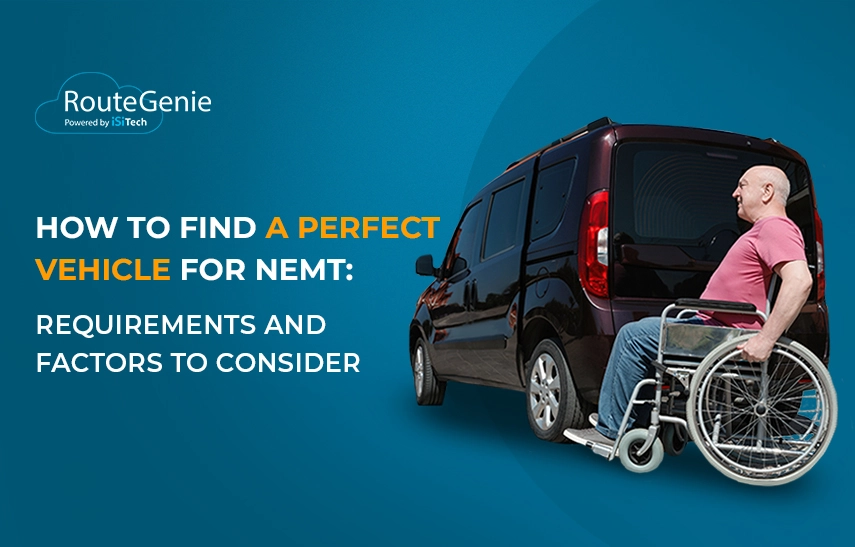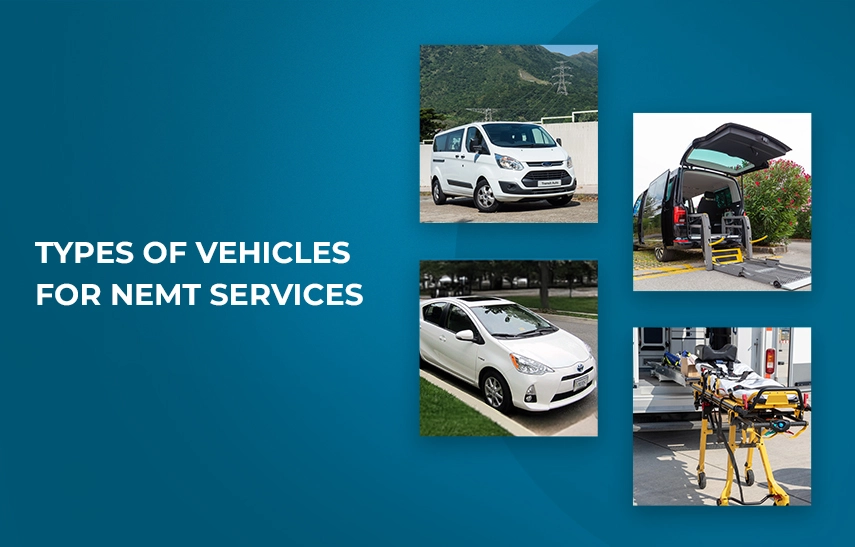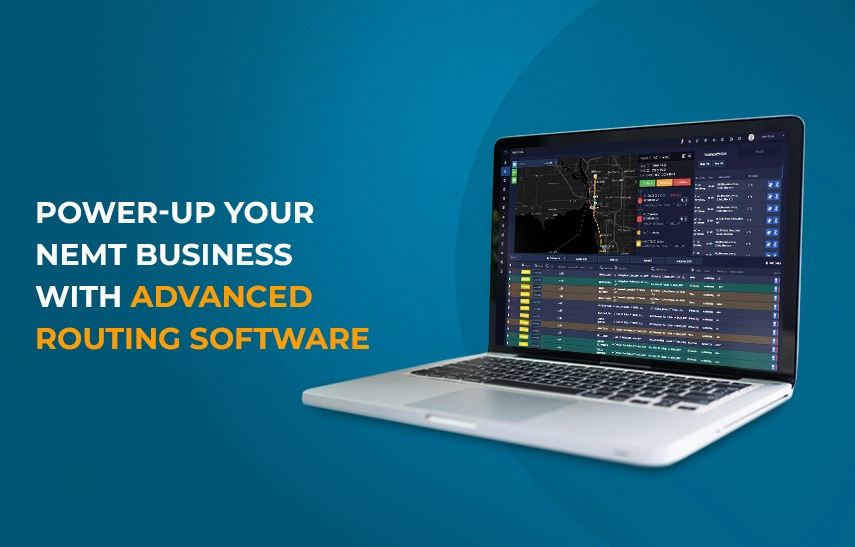How to Find a Perfect Vehicle for NEMT: Requirements and Factors to Consider

The public medical transportation system can barely keep up with the ever-growing number of medical emergencies, let alone meet the demand for non-urgent care. As usual, entrepreneurs are expected to step up to the challenge, which opens up a wealth of business opportunities.
If you want to help out your community and the healthcare industry as a whole, now is a perfect time to join the growing NEMT sector. According to the latest report to Congress by the Centers for Medicare & Medicaid Services (CMS), your potential client base would include 4 to 5 million customers and it will only keep growing.
Once the decision to start a new venture is made, the most important step every newcomer to the NEMT field must take is to purchase an NEMT vehicle. In this guide, we will go over the major requirements for the compliant transport, explore the vehicle types, and provide tips on how to select a perfect car model.
Contents:
- NEMT Vehicle Requirements: Regulations and Common Sense
- Types of Vehicles for NEMT Services
- Bottomline
- Power-up Your NEMT Business with Advanced Routing Software
NEMT Vehicle Requirements: Regulations and Common Sense
Despite a common misconception, you can't equate non-emergency medical transportation with traditional taxi cab service. In addition to passing standard traffic stop inspections, vehicles in an NEMT provider's fleet are often subject to more stringent rules and must meet specific comfort and equipment criteria. Here are some general guidelines and NEMT vehicle requirements you should follow.
Compliance, Licensing, and Documentation
- Ensure compliance with the regulations established by the local, state, and federal governments.
- Consider familiarizing yourself with The Americans with Disabilities Act and Federal Motor Carrier Safety Administration (FMCSA) regulations. Find out whether your state requires private NEMT providers to follow ADA guidelines.
- Always be ready to provide up-to-date vehicle registration and proof of ownership/leasing.
- Your vehicles should possess adequate insurance coverage (liability, collision, and comprehensive, plus coverage specific to NEMT operations).
- Your fleet should pass routine inspections by certified mechanics.
- Some states mandate that vehicles will not be allowed to operate within the NEMT service following 15 years after the vehicle manufactured date. The most common age for NEMT transport is between 5 and 10 years.
Equipment Requirements and Comfort Features
- Ample carrying capacity for the special-needs passengers and their helpers.
- Safety features and functioning equipment (airbags, seat belts, ABS brakes, regularly maintained and functioning lights, brakes, and tires).
- First aid kit, fire extinguisher.
- GPS routing equipment, vehicle tracking, and fleet management technology: lets dispatchers locate the vehicle and recommend optimal routes.
- Comfort and cleanliness (comfortable seats, functioning climate control, and an overall clean cabin)
- If required: accessibility features like a 56-inch door opening height, ramps, lifts for wheelchairs and stretchers, gear shift interlock, and four tie-downs with lap and shoulder belts.
- Additional NEMT equipment (on board wheelchair/stretcher, oxygen, stabilizing equipment, IV poles etc.).
Bear in mind that these are only the universal guidelines. Always stay up-to-date with the latest legislative requirements and consult with your local authorities for maximum compliance. Additionally, do not hesitate to ask for advice from your fellow NEMT entrepreneurs and experts in the field, and listen to your customers’ feedback to make each ride as comfortable as possible.
Types of Vehicles for NEMT Services

The abovementioned list of requirements narrows down the selection of vehicles that can qualify for the NEMT service. Additionally, the composition of your fleet will strongly depend on the size of your investment, the type of chosen transportation tasks, and the level of responsibilities you are willing to take. Choosing the right vehicle that balances out all of these criteria would significantly increase your chances of scoring contracts with private customers and Medicaid brokers.
Here is a comprehensive list of vehicle categories suitable for NEMT fleets.
Passenger Vehicles for Ambulatory or Outpatient Transportation
Based on the definition provided by the Lawinsider, an ambulatory patient is a person who does not have to stay in a hospital or other medical facility, can sit, stand, and walk with little to no assistance, and who immediately and without the aid of another is physically or mentally capable of traveling a normal path to safety, including the ascent and descent of stairs. Such passengers can travel freely and do not require special equipment; therefore, they will need non-emergency medical transportation vehicles that require minimal to no modifications. The selection of such cars is practically unlimited and would include any spacious:
-sedans
-station wagons
-crossovers and SUVs
On one hand, this variability is great and suggests an endless list of buying options: these ambulatory vehicle are typically more affordable to buy and operate, you can select a model with low fuel consumption, the fleet will present great versatility, SUVs can guarantee a smooth ride in areas with poor road conditions., and, as a bonus, you can use the vehicle as your daily driver. On the other hand, limiting yourself to the transportation of ambulatory passengers will probably lead to fewer contracts available for your enterprise to pursue, if you operate your personal vehicle, it will depreciate at an accelerated rate.
Most popular models: Toyota Prius, Nissan Versa.
Check out our full Guide on How to Buy a Non-Emergency Medical Transport (NEMT) Van.
Wheelchair-Accessible Minivans: The Workhorses of NEMT
Even though minivans still belong to the passenger vehicles class and are more often than not used to transport ambulatory passengers, they stand out as much more versatile tools for conducting an NEMT operation.
For starters, their cabins are much roomier and often feature captain chairs for each occupant, providing extra comfort and enabling potential multi-passenger trips.
A number of NEMT patients have restricted mobility needs and have to resort to the use of wheelchairs and mobility scooters. For the transportation of such passengers, the vehicle must qualify as wheelchair accessible.
Minivans are equipped with sliding doors for easier cabin access, and, typically, these are the smallest vehicles that get modified with side or rear access ramps or lifts to guide a wheelchair or a mobility scooter onboard, plus they have four-point tie-downs and lap-shoulder belts to ensure the passenger is safe during the trip.
According to the Independent Review of Non-Emergency Medical Transportation in the Indiana Medicaid Fee-for-Service System by Burns & Associates Inc. 63.5% of NEMT trip requests are for ambulatory and 30.3% are for wheelchair passengers. Given these figures, a minivan is capable of completing up to 90 percent of all NEMT contracts.
Traditionally, this would be the minimum recommended type of an NEMT vehicle that can provide some scalability to your enterprise and will satisfy a much larger array of broker requests.
Most popular NEMT minivan models: Dodge Caravan/Dodge Grand Caravan (Long Wheelbase), Toyota Sienna, Honda Odyssey, Chrysler Pacifica, Kia Carnival (AKA Sedona), Ford Transit Connect.
Stretcher Vans: Premium Do-It-All NEMT Transport
Stretcher vans will be requested by the patients who are suffering from fragile conditions that require them to lie down during transit. Usually, these are the most lucrative gigs within the NEMT field, but they require a significantly larger investment on behalf of the carrier.
An NEMT stretcher van based on a full-size van could be distinguished from a fully-fledged ambulance only by the lack of sirens. These are the largest passenger carriers in the business, that usually get equipped to handle the most demanding NEMT contracts. They offer multiple floorplans, and the modifications to the van are much more significant. Full-size vans will fit a passenger on a stretcher, medical professionals, passenger’s family and/or caretakers.
Additionally, they can ensure a tightly controlled cabin environment and provide a remote-controlled ramp, set of extra equipment like oxygen tanks, ventilators, ECG, IV poles and other stabilizer equipment.
The major downside of these vans is the higher price, higher maintenance costs, higher fuel consumption, and often rather exclusive application. If you choose to operate a fleet of larger vans, make sure that there is a demand for these vehicles among NEMT users in your area to avoid downtime. Alternatively, consider having a modular cabin layout to support an NEMT shuttle business model. In this case, the stretcher can be swapped to accommodate multiple passengers on wheelchairs or regular seats to utilize the entire interior space.
Most popular full-size medical van models: Chevrolet Express/GMC Savana, Ford E-Series Van, Ford Transit, Ram ProMaster, Mercedes-Benz Sprinter.
Bottomline
Any newcomer to the NEMT industry must make a vital choice of selecting the first vehicle for the fleet. This decision must be based on your local and national requirements. Additionally, depending on the size of your budget and ambition, you should select the NEMT niche in which to operate. This decision will guide you to the type of vehicles that will be needed in your future fleet.
All of the categories of NEMT vehicles can ensure a stable stream of orders from private passengers and brokers. By operating more specialized vehicles, you can narrow down your competition niche and accept better-paid contracts. However, by increasing the size of your vehicles and the complexity of their modifications, you are automatically driving up your investment and overhead costs.
If you want to learn more about the specific car models you should consider buying for your NEMT fleet, make sure to check out our Buying Guide with the Best NEMT Vehicles including the costs of medical transport vans, minivans, and ambulatory vehicles.
Power-up Your NEMT Business with Advanced Routing Software

You can start an NEMT company with a single vehicle or go for the big checks by establishing a fleet of stretcher vans. Regardless of this initial choice, make sure not to implement a robust scheduling, routing, billing, and dispatching system. RouteGenie is the non-emergency medical transportation software that is capable of covering all of these tasks and some more. Set yourself up for supercharged growth and try out the free demo of our product!

